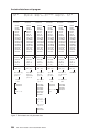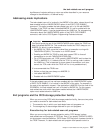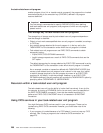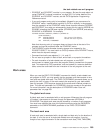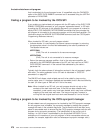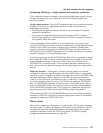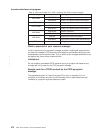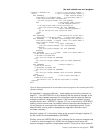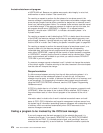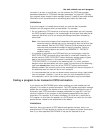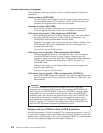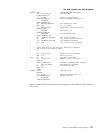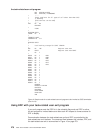Increasing efficiency – single-update and read-only protocols
If your resource manager is capable of performing a single-phase commit, you can
increase the efficiency of your system by means of CICS single-update and
read-only protocols.
Single-update protocol:
Many CICS transactions use only one external resource
manager. In this case, a single-phase commit is in order. The benefits of a
single-phase commit are:
v The resource manager can reduce from two to one the number of log forces
required for transactions.
v The number of transaction-related log records written by CICS is reduced.
v A path length reduction is achieved, because the TRUE is invoked only once at
the syncpoint, rather than twice.
To take advantage of these benefits, your task-related user exit program must
indicate to CICS that the resource manager understands the single-update protocol,
and that it (the TRUE) can process a syncpoint call to perform a single-phase
commit. It indicates this by setting the UEPSUPDR flag in the field pointed to by
UEPSYNCA in the DFHUEPAR parameter list. It must do this every time it sets the
syncpoint manager bit in the schedule flag word.
If the exit program has set the UEPSUPDR flag, then, when the syncpoint manager
next invokes the TRUE, it informs it whether the resource manager is the only one
to have updated resources in the current UOW. It does this by means of the
UERTONLY bit (in operation byte 2 of the syncpoint manager’s parameter list); if
this is set on, then the resource manager can be asked to perform a single-phase
commit.
Read-only protocol:
Similar gains in efficiency can be made if the resource
manager is in read-only mode throughout the current UOW. Again, a single-phase
commit is in order. To benefit, the resource manager must return to the TRUE a flag
indicating whether the UOW is read-only or not. The flag may show either the
“history” of the UOW so far (for example, so far it is read-only), or simply whether
the current request is read-only. In turn, the TRUE must update the UEPREADO
flag in the DFHUEPAR parameter list with the history of the UOW so far. That is, it
must set UEPREADO initially, but unset it as soon as the UOW contains updates.
(Once UEPREADO has been unset, CICS ignores any subsequent setting of the
flag during the current UOW, and treats the UOW as containing updates.)
At the end of the UOW, if the UEPREADO flag is still set, the syncpoint manager
invokes the TRUE with instructions to issue a single-phase commit to the resource
manager (by setting the UERTELUW bit on).
Return codes
When a task-related user exit program is invoked by the CICS syncpoint manager,
the return codes it is able to set depend on the reason for the invocation. Table 12
on page 272 shows the relationship between the request flags in the syncpoint
manager’s parameter list and the TRUE return codes. (The CICS syncpoint
manager parameters are described on page 258.)
the task-related user exit program
Chapter 2. Task-related user exit programs 271




